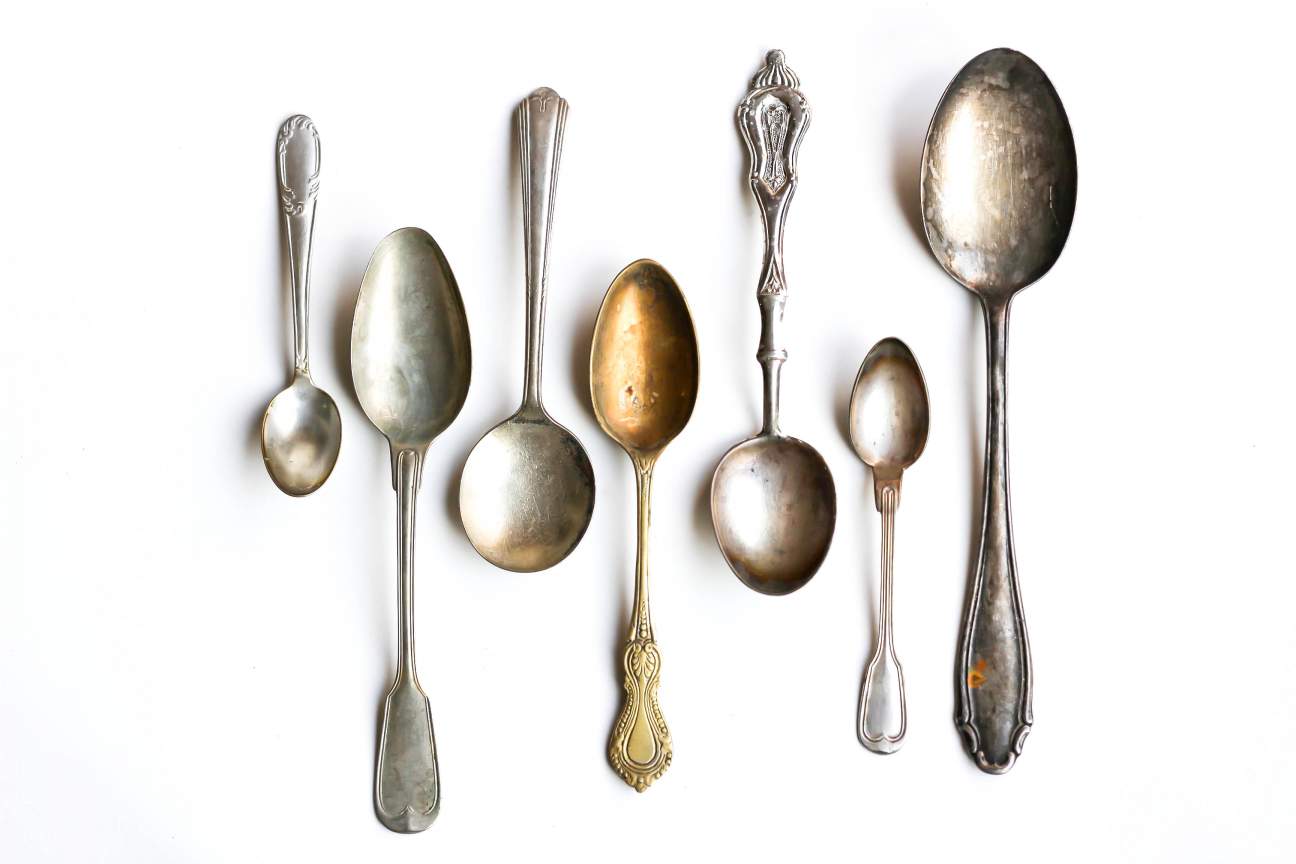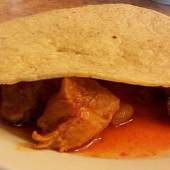The Spoon

“Animals eat; only man dines.”
--Mrs. Isabella Beeton, Victorian etiquette maven
“If our…utensils are not works of art, they are wretched makeshifts or what is worse, degrading shams of better things.”
--William Morris, renowned artist and textile designer
Sit down at any dining table – whether it be at home, at a dinner party, at a picnic, or in a restaurant – and among many other things, you can expect to find eating utensils, otherwise known as flatware, silverware, or cutlery. (If you’re wondering whether there’s a difference between them, of course there is – depending upon their use or composition.)
Let’s start with the one that may have come along first: the spoon. (The knife and the fork will be covered in future entries.) Here are some fun facts about this practical necessity (unless consuming steaming hot soup without one appeals to you) -- the kinds of spoons that exist and why, and what your spoons – or those you give as gifts – might indicate about your social and economic status.
The earliest version of the spoon as we know it, which first surfaces in the Paleolithic era, may have been fashioned from a husk or shell as its “bowl,” affixed to a stick. In fact, the word “spoon,” both Latin and Greek, is derived from “cochlea,” or snail shell. Later incarnations of the spoon were carved out of horns or bone, wood, slate, ivory, or flint, and as its shape evolved, porcelain (especially in Eastern cultures). Later, when the Industrial Revolution made mass-production possible, they were fashioned out of metals – pewter or bronze, and for the especially well-heeled, heavily embellished silver or gold. There were some issues in the early days with chemical reactions of some metals to certain foods, which weakened and in some cases dissolved the utensils. But the development of various alloys that include nickel, copper, or iron helped to remedy that, and since approximately 1970, most garden-variety eating utensils have been made of stainless steel, sometimes covered with various kinds of platings.
There are many types of spoons, created for a variety of uses. Depending on the elaborateness of the meal and the kinds of foods that will be served, you might find the following as part of your place setting:
- a table spoon (standard, multipurpose)
- a soup spoon or the smaller bouillon spoon
- a dessert spoon
- a citrus spoon (its bowl has a jagged edge, used for cutting into melons and grapefruit, oranges, and other citrus fruits)
- a caviar spoon – these are generally made from a material other than silver, as that metal has been known to affect the flavor
- a beverage spoon (a long-handled spoon for stirring iced tea, for instance); also used for eating a deep-dished dessert such as a parfait
- a sugar spoon – its bowl is often in the shape of a sea shell
- a tea, coffee, or demitasse spoon – various sizes according to the size of the cup.
There are also serving spoons, including:
- a standard large serving spoon for various foods such as potatoes and vegetables
- ladles of various sizes for soups, sauces, and gravies
- a mustard or condiment spoon for which a ladle would not be effective
- a slotted spoon that allows liquids to drain
- a jam or jelly spoon (small to fit in a jelly jar)
- a spaghetti spoon – with tines around the exterior of its bowl. Did you know that the traditional hole in the middle is used to measure each portion of dried spaghetti before cooking? You’re welcome.
Spoons are also a part of ceremonies, used for good luck and religious purposes, and for non-culinary uses. Among them are:
- a coronation or anointing spoon, used (as you might guess) in coronation ceremonies for British monarchs; these are a symbol of influence and wealth
- a cochlear, used for communion in the Eastern Orthodox Church
- an uddharani, used during Hindu rites
- a small silver spoon given as a christening gift, to wish the infant a prosperous life; these were sometimes engraved or included a rendering of a bust of an apostle. It was traditional, if one could afford it, to send a set of 12 spoons to a child with a possible 13th to be added later (the “Master Spoon”); less affluent well-wishers could just send one spoon
- a lovespoon – a Welsh tradition, this hand-carved wooden spoon is given as a gift to a fiancée from her intended
- a souvenir spoon – a tourist gift shop mainstay to mark a special event or location
- a ear spoon, for scooping out earwax (subsequent innovations, thankfully, have displaced this)
- a cocaine spoon, perhaps the smallest spoon of all. If you are unaware of its use, Eric Clapton has you covered.
There are a few household items that are essential to our everyday existence – it’s a safe bet that the spoon is one of them. The next time you sit down to a bowl of hot soup, spare a good thought for the person who invented it, centuries ago.





